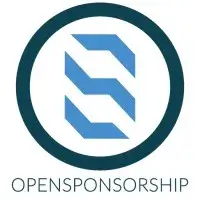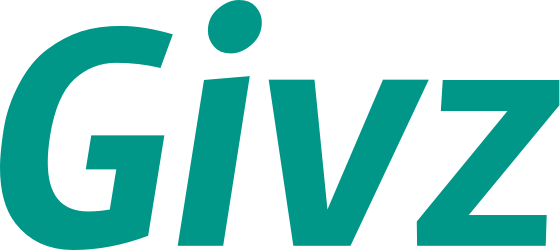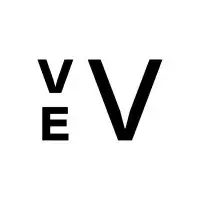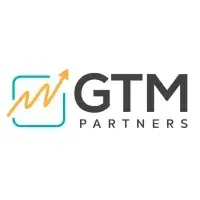Ready to launch your own podcast? Book a strategy call.
Frontlines.io | Where B2B Founders Talk GTM.
Strategic Communications Advisory For Visionary Founders
Conversation
Highlights
From Agency to Automation: How Workflow Labs is Disrupting E-Commerce Management
In a recent episode of Category Visionaries, Justin Leigh, CEO of Workflow Labs, shared the story behind his e-commerce management platform that’s raised $3.5 million in funding. After running a successful Amazon agency for 14 years, Leigh is now tackling a challenge he knows intimately: replacing labor-intensive e-commerce management with scalable automation.
The Agency Origins
Before founding Workflow Labs, Leigh built Ideoclick, a pioneering Amazon agency that grew to 150 employees and $25 million in annual recurring revenue. The experience provided valuable insights, but also revealed fundamental limitations of the service-based model.
“I ran that about 14 years and we had about 150 folks and it got to about 25 million of ARR, which is great and all, but it’s a lot of people,” Leigh explains. This realization sparked a question: how could he deliver the same value with better economics?
The answer became the foundation of Workflow Labs: “How can we do this but do it with less people and more scale and more automation? So the purpose of Workflow Labs really is to take a human driven process like managing your Amazon catalog and do it at scale with automation.”
The Software Transition
Transitioning from an agency to software business came with significant challenges. While agencies can grow organically by adding clients and staff in tandem, software requires substantial upfront investment before securing a single customer.
“When you think about starting a company, it’s a lot easier to start a people based agency,” Leigh says. “This time with software you don’t get any clients until you have invested pretty heavily in having a product and then you hope it’s the right product and you hope someone buys it.”
Despite the higher initial risk, Leigh is convinced the software model is superior: “Having kind of got through maybe that risk valley of getting the product launched in the marketplace, you know, I definitely wouldn’t go back to the agency model if I didn’t have to.”
Targeting Partners, Not Brands
Perhaps the most innovative aspect of Workflow Labs’ go-to-market strategy is their approach to customer acquisition. Rather than selling directly to brands one by one, they target partners who aggregate brands in large numbers.
“If we need to close 3,000 brands in two to two and a half years, that’s the mission,” Leigh explains. “You’re not going to do that, selling them one by one.”
Instead, Workflow Labs asks: “Who aggregates these brands for us? Where can we find partners or platforms where all these brands are coming together and we can sign up brands, tens, twenties, fifties, hundreds at a time?”
This approach focuses on strategic partnerships with major ad agencies like Omnicom, WPP, and Kublasys, allowing Workflow Labs to rapidly scale without the time-intensive process of individual sales cycles.
Aligning with Market Trends
Workflow Labs’ strategy is further strengthened by its alignment with a major industry shift: the migration of advertising dollars to retail media networks.
“The big trend that we saw was that retail media is driving all the advertising dollars onto retailer platforms, ad platforms like Amazon,” Leigh notes. “Brands used to spend on NBC, then they spent on Google, now they spend directly on Amazon, where you can invest your marketing dollars and see who clicks and who buys.”
By positioning their product as an essential complement to retail media advertising, Workflow Labs taps into existing budgets and priorities. Their automation ensures that products being advertised have accurate listings, are in stock, and are properly presented—critical components for successful retail media campaigns.
The Pivot: From Automation to Comprehensive Solution
Like many startups, Workflow Labs initially misjudged what would resonate with potential customers. Their early pitch focused on labor cost reduction: “You have a 50 person team in India and all they’re doing is updating titles, we can make 80% of that labor go away.”
The market response was underwhelming. “No one cared because they didn’t really know what the people in India were doing,” Leigh admits. “They didn’t have a problem that needed to be solved.”
This realization prompted a crucial pivot in their messaging and approach. “We had to create a box that you could put any problem into… a comprehensive solution was much more important than being an automated solution,” Leigh explains.
The team developed a “push-pull method” to create market demand. They engaged directly with brands to influence RFP requirements, ensuring that automated product management became a standard expectation when selecting service providers.
“We work very hard on is to engage with brands directly and say… When you RFP for your advertising services, you better make sure that your provider is providing an automated way to keep your products accurate in stock,” Leigh shares. This strategy created a “nice pull in the market” that positioned Workflow Labs as the only viable solution.
Clarity of Purpose: The 3,000-Brand Mission
Unlike many founders who evade exit discussions, Leigh is refreshingly transparent about Workflow Labs’ objectives. The entire team knows their goal: reach 3,000 brands.
“This time around, instead of just saying, the world is our ocean, let’s get big, I said, we’re going to get to 3,000, and that’s our goal,” Leigh states. This clarity helps everyone in the company work toward a common purpose: “Every month we as a team look at it and say, how many do we have? How close are we to 3,000?”
Importantly, team members understand what achieving this goal means for them personally: “Everyone on the team knows what happens when we get to 3,000… that’s when liquidity events and things like that start to be on the table. All our folks have equity, and so they act as owners are clear about our objective.”
The Rule of Three
Among Leigh’s most valuable insights is his “rule of three”—focusing on just three key objectives per quarter to prevent dilution of effort.
“If you’re trying to do more than three things, you’re doing too many. You probably can only do one or two, but three is the max in a quarter,” Leigh advises. “So just decide what the three most important things are and do those.”
This approach helps the company maintain focus amid the countless potential distractions that startups face. It also ensures that every team member understands the current priorities, contributing to a cohesive organizational effort.
Looking Forward
As Workflow Labs continues its journey, Leigh envisions two potential paths: either growing to become an acquisition target for one of their partner agencies or expanding beyond e-commerce management to apply their automation approach to other industries.
Whatever the outcome, Leigh’s experience has taught him valuable lessons about entrepreneurship, scale, and the importance of clarity. By focusing on partnerships, aligning with market trends, and maintaining ruthless prioritization, Workflow Labs is positioned to disrupt e-commerce management in ways that his previous agency never could.
For B2B founders navigating similar transitions or seeking scalable go-to-market strategies, Justin Leigh’s journey offers a masterclass in pivoting effectively, targeting efficiently, and communicating transparently—lessons that transcend industry boundaries and speak to the universal challenges of building high-growth technology companies.
Actionable
Takeaways
Partner with aggregators instead of selling one-by-one:
Workflow Labs recognized that selling directly to individual brands would take too long to reach scale. Justin explained, "If we need to close 3,000 brands in two years, you're not going to do that selling them one by one." Instead, they identified partners who already worked with pools of brands—like ad agencies and supply chain providers—allowing them to sign up "tens, twenties, fifties, hundreds at a time."
Align with emerging market trends:
Justin identified that retail media networks (Amazon, Walmart, Target) are where advertising dollars are shifting. He positioned Workflow Labs to support this trend: "We said as that shift continues, we support the product. If you're going to advertise a product, you better make sure their title's right, bullets are right, that it's in stock." B2B founders should identify major industry shifts and align their solutions with those trends.
Create market pull through RFP requirements:
Workflow Labs uses a "push-pull method" by engaging directly with brands to influence their RFP requirements. Justin noted, "We work very hard to engage with brands directly and say...when you RFP for your advertising services, you better make sure your provider is providing an automated way to keep your products accurate." This creates demand that potential partners must satisfy, making partnership conversations easier.
Pivot based on customer feedback—even when it contradicts your assumptions:
Workflow Labs initially thought customers would care about labor cost reduction but discovered their messaging wasn't resonating. Justin admitted, "We thought initially so many wrong things...When you went to the market and said, 'Hey, you have a 50-person team in India and all they're doing is updating titles, we can make 80% of that labor go away,' no one cared." They pivoted to position themselves as a comprehensive solution rather than just automation.
Establish clear, quantifiable objectives:
Justin implemented the "rule of three"—focusing on just three key objectives per quarter. He shared a powerful insight about founder transparency: "If you want everybody in your company to row the boat in the same direction...be super clear around what your objectives are." This includes being upfront about exit goals: "Everyone on the team knows what happens when we get to 3,000 [customers], if we can get close to there...that's when liquidity events start to be on the table."



































































































